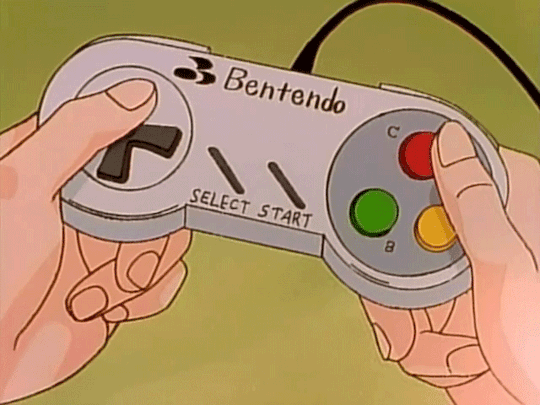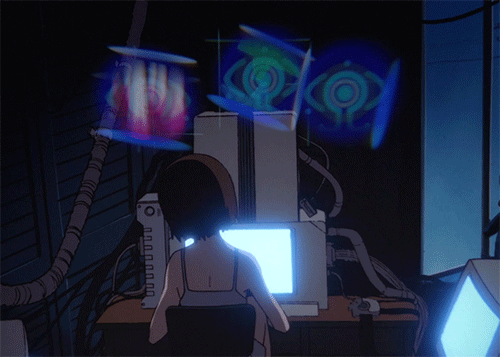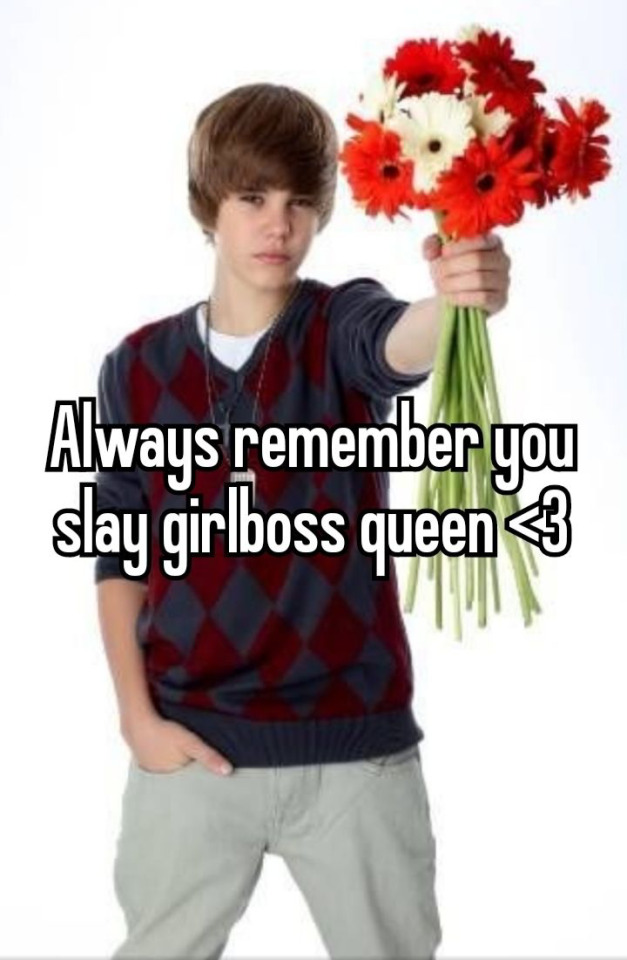Text
Week 10 – Social Media Governance: Free Speech or Free-for-All?
════════════════════════════════════ ✦ . ⁺ . ✦ . ⁺ . ✦ . ⁺ . ✦ . ⁺ . ✦ . ⁺ . ✦ . ︶⊹︶︶୨୧︶︶⊹︶︶⊹︶︶୨୧︶︶⊹︶︶⊹︶︶୨୧︶︶⊹︶︶⊹
Social media platforms were supposed to be digital town squares, but instead, they’ve turned into battlegrounds for harassment, misinformation, and toxic online culture. Who should be responsible for keeping the internet safe? The platforms? Governments? Us?
The Digital Divide: Who Gets to Speak?
Online harassment isn’t random, it disproportionately affects women, LGBTQ+ users, and marginalized communities.
🔹 Haslop et al. (2021) found that UK student culture tolerates gendered harassment, creating a digital divide where some feel safe online and others don’t. 🔹 Marwick & Caplan (2018) unpack how the manosphere fuels harassment, from misogynistic memes to coordinated trolling.
Meanwhile, Plan International (2020) reports that 58% of young women worldwide have faced online abuse. Platforms say they "take action", but… do they really?

Resistance & The Rise of Digital Feminism
From Anita Sarkeesian’s feminist gaming critiques to artists turning harassment into memes, digital resistance is growing. 🔹 Vitis & Gilmour (2017) document how women use humor, art, and Instagram to push back against unsolicited explicit messages.🔹 Sundén & Paasonen (2019) explore #MeToo backlash, showing how mocking survivors became an unlikely form of internet comedy.
But while resistance is powerful, the burden is always on the victims and not the platforms enabling harassment.
The Manosphere & Radicalization Online
Why are figures like Andrew Tate so popular? Rich & Bujalkagence (2023) explain that the manosphere appeals to "lost men", offering community, purpose, and a scapegoat (usually feminism).
We’ve seen this before:
🔹 GamerGate (2014) – Targeted harassment disguised as "ethics in gaming journalism."
🔹 The Red Pill Movement – A "self-improvement" community that turns into misogyny and conspiracy theories.
🔹 Tate’s Hustler’s University – Marketed as "self-help", but really a pipeline into radical misogyny.
The problem? Social media algorithms boost this kind of content because controversy = engagement.

Who Governs the Internet?
Governments are finally stepping in, but their solutions aren’t perfect. 🔹 Australia’s Online Safety Act (2021) introduces faster takedowns for online abuse. 🔹 The eSafety Commissioner oversees platform accountability, but can one agency really regulate the whole internet?
The big question: Should social media be treated like a public utility? If so, who decides what’s "free speech" and what’s harm?
The Fight for a Safer Internet
Social media isn’t "just the internet" anymore. It’s where we work, protest, and exist. If platforms won’t fix the problem, governments (and users) have to step up.

════════════════════════════════════ ✦ . ⁺ . ✦ . ⁺ . ✦ . ⁺ . ✦ . ⁺ . ✦ . ⁺ . ✦ . ︶⊹︶︶୨୧︶︶⊹︶︶⊹︶︶୨୧︶︶⊹︶︶⊹︶︶୨୧︶︶⊹︶︶⊹
Reference List
Haslop, C., O’Rourke, F., & Southern, R. (2021). #NoSnowflakes: The toleration of harassment and an emergent gender-related digital divide, in a UK student online culture. Convergence, 27(5), 1418–1438.
Marwick, A. E., & Caplan, R. (2018). Drinking male tears: Language, the manosphere, and networked harassment. Feminist Media Studies, 18(4), 543-559.
Plan International. (2020). Free to Be Online 2020 Report.
Rich, B., & Bujalkagence, E. (2023). The draw of the ‘manosphere’: Understanding Andrew Tate’s appeal to lost men. The Conversation.
Sundén, J., & Paasonen, S. (2019). Inappropriate laughter: Affective homophily and the unlikely comedy of #MeToo. Social Media + Society. https://doi.org/10.1177/2056305119883425
Vitis, L., & Gilmour, F. (2017). Dick pics on blast: A woman’s resistance to online sexual harassment using humour, art and Instagram. Crime, Media, Culture, 13(3), 335-355.
0 notes
Text
Week 9 – Gaming Communities: More Than Just Button Mashing
════════════════════════════════════ ✦ . ⁺ . ✦ . ⁺ . ✦ . ⁺ . ✦ . ⁺ . ✦ . ⁺ . ✦ . ︶⊹︶︶୨୧︶︶⊹︶︶⊹︶︶୨୧︶︶⊹︶︶⊹︶︶୨୧︶︶⊹︶︶⊹
Let’s be real, gaming isn’t just about playing anymore. It’s about streaming, modding, socializing, and maybe even turning a hobby into a full-blown career. But how do indie developers, live streamers, and gaming communities navigate the digital landscape?
The Indie Scene: Passion or Profit?
Melbourne’s indie gaming community is a hotspot for creativity (Keogh, 2021). But here’s the catch: small studios often struggle with the "value regimes" that shape the industry. Meaning indie devs love making unique, experimental games, but the market (and platforms like Steam and Epic) often push them toward what sells, not what’s innovative.
Live Streaming: A New Way to Game (or Perform?)
Gaming isn’t just playing, it’s also watching others play. Twitch, YouTube Gaming, and Facebook Live have turned gaming into a spectator sport (Taylor, 2018). This builds gaming communities, allowing creators to earn money. However, it can be toxic, algorithm-driven, and exhausting for streamers trying to keep up.
And let’s not forget the Twitch "Hot Tub Meta" or the constant struggle of smaller streamers trying to get noticed. The platform isn’t always fair: big streamers thrive, while newcomers grind for years.

Platformisation & Who Holds the Power
Chia et al. (2020) explain how platformisation has changed game development. 🔹 Devs now rely on major platforms (Steam, Epic, Twitch, etc.) to distribute and market their games. 🔹 Platforms dictate who gets seen and who doesn’t.🔹 Players? We’re at the mercy of ever-changing monetization models, microtransactions, and corporate control.
Even in sandbox games like Minecraft, platform control affects creativity. Hjorth et al. (2021) explore how players make their own meaning through modding, roleplay, and shared experiences but at the end of the day, Microsoft still owns the server.
Community, Creativity, and Corporate Control
Gaming thrives on community, but the platforms controlling it hold the real power. Whether it’s indie devs trying to break through, streamers battling the algorithm, or players fighting for fairer microtransactions, one thing is clear: Gaming isn’t just about playing anymore, it’s about surviving the digital ecosystem.

════════════════════════════════════ ✦ . ⁺ . ✦ . ⁺ . ✦ . ⁺ . ✦ . ⁺ . ✦ . ⁺ . ✦ . ︶⊹︶︶୨୧︶︶⊹︶︶⊹︶︶୨୧︶︶⊹︶︶⊹︶︶୨୧︶︶⊹︶︶⊹
Reference List
Chia, A., Keogh, B., Leorke, D., & Nicoll, B. (2020). Platformisation in game development. Internet Policy Review, 9(4). https://doi.org/10.14763/2020.4.1515
Hjorth, L., Richardson, I., Davies, H., & Balmford, W. (2021). Exploring play. In Exploring Minecraft: Ethnographies of Play and Creativity (pp. 27-47). Palgrave Macmillan.
Keogh, B. (2021). The Melbourne indie game scenes: Value regimes in localized game development. In P. Ruffino (Ed.), Independent Videogames: Cultures, Networks, Techniques and Politics (pp. 209-222). Routledge.
Taylor, T. L. (2018). Broadcasting ourselves. In Watch Me Play: Twitch and the Rise of Game Live Streaming (pp. 1-23). Princeton University Press.
0 notes
Text
Week 8 – Instagram Filters: Cute Enhancements or Digital Dysmorphia?
════════════════════════════════════ ✦ . ⁺ . ✦ . ⁺ . ✦ . ⁺ . ✦ . ⁺ . ✦ . ⁺ . ✦ . ︶⊹︶︶୨୧︶︶⊹︶︶⊹︶︶୨୧︶︶⊹︶︶⊹︶︶୨୧︶︶⊹︶︶⊹
Ever put on an Instagram filter and thought, “Wow, I look amazing” only to look in the mirror and feel instantly disappointed? Congratulations, you’ve experienced filtered reality.
The Rise of the "Instagram Face"
Beauty filters started as fun little tweaks: puppy ears, flower crowns, sparkles. Now? They’re face-altering technology that slims noses, enlarges eyes, and smooths skin into AI-generated perfection.
According to Barker (2020), filters aren’t just about play, they reshape our beauty expectations. Snapchat, Instagram, and TikTok don’t just show us an idealized version of ourselves; they teach us to prefer it over reality.
💄 Filtered Reality & Digital Dysmorphia Ever heard of Snapchat Dysmorphia? It’s real. As Coy-Dibley (2016) explains, filters digitally disfigure the body, setting up impossible standards that lead to dissatisfaction, anxiety, and even plastic surgery requests for "filter face" in real life.

💄 Biometric Citizens & Machine VisionRettberg (2017) argues that filters aren’t just about aesthetics, they’re about training AI to recognize and classify faces.Every time we use them, we’re feeding biometric data into the system. So… who really benefits? (Hint: Not us).
💄 The Algorithm Decides What’s BeautifulFilters don’t just reflect beauty trends—they create them. By prioritizing lighter skin, smaller noses, and symmetrical features, they reinforce Eurocentric beauty standards (yes, even the “subtle” ones). Rettberg (2014) calls this a "feedback loop of beauty" where what the algorithm promotes is what we learn to desire.
When the "Real You" Feels Like a Disappointment
If filters make us feel prettier online but worse offline, are they really harmless? The next time you use one, ask yourself: Do I like how I look… or just how the filter makes me look?

════════════════════════════════════ ✦ . ⁺ . ✦ . ⁺ . ✦ . ⁺ . ✦ . ⁺ . ✦ . ⁺ . ✦ . ︶⊹︶︶୨୧︶︶⊹︶︶⊹︶︶୨୧︶︶⊹︶︶⊹︶︶୨୧︶︶⊹︶︶⊹
Reference List
Barker, J. (2020). Making-up on mobile: The pretty filters and ugly implications of Snapchat. Fashion, Style & Popular Culture, 7(2), 207-221. https://doi.org/10.1386/fspc_00015_1
Coy-Dibley, I. (2016). Digitised dysmorphia of the female body: The re/disfigurement of the image. Palgrave Communications, 2, 16040. https://doi.org/10.1057/palcomms.2016.40
Rettberg, J. W. (2014). Filtered reality. In Seeing ourselves through technology: How we use selfies, blogs, and wearable devices to see and shape ourselves. Palgrave Macmillan. https://doi.org/10.1057/9781137476661_2
Rettberg, J. W. (2017). Biometric citizens: Adapting our selfies to machine vision. In A. Kuntsman (Ed.), Selfie Citizenship. Palgrave Macmillan. https://doi.org/10.1007/978-3-319-45270-8_10
0 notes
Text
Week 7 – The Algorithm’s Ideal Body: Social Media, Surgery, and the Never-Ending Glow-Up
════════════════════════════════════ ✦ . ⁺ . ✦ . ⁺ . ✦ . ⁺ . ✦ . ⁺ . ✦ . ⁺ . ✦ . ︶⊹︶︶୨୧︶︶⊹︶︶⊹︶︶୨୧︶︶⊹︶︶⊹︶︶୨୧︶︶⊹︶︶⊹
Ever noticed how social media loves a "before and after" transformation? Whether it's weight loss, cosmetic procedures, or makeup illusions, platforms like Instagram and TikTok thrive on curated perfection. But behind every flawless selfie is a mix of filters, Facetune, and (sometimes) a little (or a lot) of actual body modification.
Beauty in the Age of the Algorithm
Social media isn’t just a mirror, it’s a magnifying glass that warps beauty standards. The more people engage with certain aesthetics, the more the algorithm pushes it. According to Duffy & Meisner (2022), social media platforms dictate what becomes visible (or invisible), shaping trends in ways users don’t always realize.

So, if you’ve ever wondered why your feed is suspiciously full of snatched waistlines and BBL influencers, that’s not an accident.
💉 Algorithmic Hotness: The internet isn’t just watching trends; it’s creating them. Carah & Dobson (2016) argue that young women, in particular, engage in “promotion” and “reconnaissance” work—self-surveilling their bodies to meet the digital beauty standard. Translation: we’re constantly tweaking our looks to match whatever the internet decides is hot this year.
💉 Plastic Surgery on the ‘Gram: Dorfman et al. (2018) found that plastic surgery-related hashtags on Instagram are now major marketing tools. Surgeons aren’t just medical professionals anymore, they’re content creators, turning procedures into bite-sized, digestible #GlowUp videos.
💉 From Selfie to Scalpel: What starts as a harmless filter can lead to real-life cosmetic surgery. Lane (2016) describes body modification as a process shaped by social norms and personal identity, which, in the age of social media, means if the internet shifts, our self-image shifts too.
The Double Standard of Beauty "Transparency"
In one corner: influencers posting #NoFilter selfies while secretly using editing apps and cosmetic procedures. In the other: people shaming others for “changing themselves” while still worshipping unattainable beauty standards.
So… is social media empowering us to embrace body modification, or pressuring us into it?

Post-Internet Body Standards = Impossible Mode
The body positivity movement coexists with hyper-curated, influencer-driven beauty—and sometimes, they’re at odds. While some use social media to challenge unrealistic beauty norms, others are reshaping themselves to fit them.
At the end of the day, your body = your choice. Just don’t let the algorithm make it for you.

════════════════════════════════════ ✦ . ⁺ . ✦ . ⁺ . ✦ . ⁺ . ✦ . ⁺ . ✦ . ⁺ . ✦ . ︶⊹︶︶୨୧︶︶⊹︶︶⊹︶︶୨୧︶︶⊹︶︶⊹︶︶୨୧︶︶⊹︶︶⊹
Reference List
Carah, N., & Dobson, A. (2016). Algorithmic hotness: Young women’s “promotion” and “reconnaissance” work via social media body images. Social Media + Society. https://doi.org/10.xxxx/xxxxx
Dorfman, R. G., Vaca, E. E., Mahmood, E., Fine, N. A., & Schierle, C. F. (2018). Plastic surgery-related hashtag utilization on Instagram: Implications for education and marketing. Aesthetic Surgery Journal, 38(3), 332–338. https://doi.org/10.xxxx/xxxxx
Duffy, B. E., & Meisner, C. (2022). Platform governance at the margins: Social media creators’ experiences with algorithmic (in)visibility. Media, Culture & Society. https://doi.org/10.1177/01634437221111923
Lane, D. C. (2016). Understanding body modification: A process-based framework. Sociology Compass, 10(9). https://doi.org/10.1111/soc4.12495
0 notes
Text
Week 6 – Slow Fashion: Influencers, Greenwashing, and the Eternal Shein Cycle
════════════════════════════════════ ✦ . ⁺ . ✦ . ⁺ . ✦ . ⁺ . ✦ . ⁺ . ✦ . ⁺ . ✦ . ︶⊹︶︶୨୧︶︶⊹︶︶⊹︶︶୨୧︶︶⊹︶︶⊹︶︶୨୧︶︶⊹︶︶⊹
So, let’s talk slow fashion. You know, that thing where people tell you to stop buying $5 crop tops from certain retailers and invest in “timeless, sustainable pieces” (aka a $300 basic linen dress that you definitely can’t afford). But is slow fashion really just for the elite? And are influencers actually helping or just hopping on another aesthetic trend?
The Good, The Bad, and the "That’s Just Greenwashing in a Cute Font"
Influencers play a huge role in the slow fashion movement. As McKinsey & Company (2021) points out, consumer awareness is at an all-time high, making transparency more crucial than ever. On one hand, influencers raise awareness about sustainability, ethical labor, and overconsumption. On the other… they’re still influencers. Meaning:
Encouraging mindful consumption? Yes. Promoting yet another expensive brand while calling it “minimalist chic”? Also yes.
As Domingos et al. (2022) discuss, consumer behavior around slow fashion is shaped by accessibility and marketing, meaning that the people most likely to engage are the ones with the money and privilege to do so. Meanwhile, brands love to slap a “green” label on their collections (looking at you, H&M Conscious), but as Kopnina (2019) points out, that doesn’t always mean actual sustainability.
Which brings us to…
The Influencer Paradox: Are They Helping or Just Selling a Vibe?
Social media influencers are basically the middlemen of activism now, turning important issues into digestible, aesthetically pleasing posts. Platforms like TikTok and Instagram help slow fashion reach a wider audience (Chi et al., 2021), but let’s be real: how many of these influencers were pushing haul culture a year ago?
"STOP BUYING FAST FASHION!" – says the influencer wearing a brand-new $250 set from a "sustainable" brand that pays workers pennies.
Meanwhile, actual slow fashion advocates like Venetia La Manna and Tiffany Ferguson are out here calling out wage theft, overproduction, and the industry’s hypocrisy.

Slow Fashion Needs to Be for Everyone
Slow fashion shouldn’t be just another rich people aesthetic—it should be about making sustainable clothing accessible. Until then, thrifting, swapping, and upcycling are the real MVPs.

════════════════════════════════════ ✦ . ⁺ . ✦ . ⁺ . ✦ . ⁺ . ✦ . ⁺ . ✦ . ⁺ . ✦ . ︶⊹︶︶୨୧︶︶⊹︶︶⊹︶︶୨୧︶︶⊹︶︶⊹︶︶୨୧︶︶⊹︶︶⊹
Reference List
Chi, T., Gerard, J., Yu, Y., & Wang, Y. (2021). A study of U.S. consumers’ intention to purchase slow fashion apparel: Understanding the key determinants. International Journal of Fashion Design, Technology and Education, 14(1), 101-112. https://doi.org/10.1080/17543266.2021.1872714
Domingos, M., Vale, V. T., & Faria, S. (2022). Slow fashion consumer behavior: A literature review. Sustainability, 14(5), 2860. https://doi.org/10.3390/su14052860
Kopnina, H. (2019). Green-washing or best case practices? Using circular economy and Cradle to Cradle case studies in business education. Journal of Cleaner Production, 219, 613-621. https://doi.org/10.1016/j.jclepro.2019.02.045
McKinsey & Company. (2021). The state of fashion 2021. https://www.mckinsey.com/industries/retail/our-insights/state-of-fashion
0 notes
Text
Week 5 – Digital Citizenship: Hashtag Hustle and Activism 2.0
════════════════════════════════════ ✦ . ⁺ . ✦ . ⁺ . ✦ . ⁺ . ✦ . ⁺ . ✦ . ⁺ . ✦ . ︶⊹︶︶୨୧︶︶⊹︶︶⊹︶︶୨୧︶︶⊹︶︶⊹︶︶୨୧︶︶⊹︶︶⊹
In today’s hyper-connected world, digital citizenship isn’t just about knowing your way around social media—it’s a radical reimagining of activism. Gone are the days when change only came through established organizations and formal campaigns. Now, every tweet, snap, and post is a potential act of resistance, a spark for real-world change, and a badge of our collective digital identity.

Modern activism has shifted into an era of instantaneous engagement. Activists are now empowered to mobilize on a case-by-case basis, fueled by moral urgency and the irresistible draw of narrative-based storytelling. When a stirring personal story is shared or a viral meme is posted, it transcends its digital origin to ignite discussions and even challenge prevailing power structures (Shirky, 2008). It’s this very immediacy that turns everyday digital interactions into a dynamic public forum where issues of justice, equality, and environmental sustainability are debated at breakneck speed.
However, our digital playground isn’t without its complications. Social media platforms, with their ever-evolving algorithms, often dictate who gets seen and who fades into obscurity. The same tools that democratize political dialogue also create a competitive arena where influencers and activists alike must constantly refine their digital strategy. Chasing algorithmic visibility has even spawned trends like the sleek, minimalist infographic—a modern-day call to arms that transforms complex political issues into digestible visuals (Jenkins, 2006).

Yet, this race for digital prominence comes with a cost. The drive for engagement sometimes gives rise to a culture of public shaming, where those who aren’t “in the know” or sufficiently vocal about current issues are swiftly called out. While this accountability can spur action, it also risks alienating potential allies and oversimplifying nuanced debates.
Ultimately, digital citizenship today is about striking a balance between active participation and thoughtful discourse. Every post and hashtag contributes to a larger, ongoing conversation about who we are as a society and what we value. So, whether you’re crafting a clever meme or sharing an impassioned story, remember: your voice matters, and in the digital realm, every click can be a catalyst for change.
════════════════════════════════════ ✦ . ⁺ . ✦ . ⁺ . ✦ . ⁺ . ✦ . ⁺ . ✦ . ⁺ . ✦ . ︶⊹︶︶୨୧︶︶⊹︶︶⊹︶︶୨୧︶︶⊹︶︶⊹︶︶୨୧︶︶⊹︶︶⊹
Reference List
Castells, M. (2012). Castells, Manuel (2012). Networks of outrage and hope - social movements in the Internet age. International Journal of Public Opinion Research, 25(3), 398–402. https://doi.org/10.1093/ijpor/edt020
Jenkins, H. (2006). Convergence Culture: Where Old and New Media Collide. New York: New York University Press. Social Science Computer Review, 26(2). https://doi.org/10.1177/0894439307306088
Shirky, C. (2008). Here comes everybody: The power of organizing without organizations. Penguin Books.
0 notes
Text
Week 4 – Reality TV: Popcorn Politics & Drama Beyond the Screen
════════════════════════════════════ ✦ . ⁺ . ✦ . ⁺ . ✦ . ⁺ . ✦ . ⁺ . ✦ . ⁺ . ✦ . ︶⊹︶︶୨୧︶︶⊹︶︶⊹︶︶୨୧︶︶⊹︶︶⊹︶︶୨୧︶︶⊹︶︶⊹
Who would have thought that our favorite guilty pleasure—reality TV—could double as a launchpad for political discourse? Despite its reputation for delivering over-the-top drama and perfectly choreographed chaos, reality TV is more than just escapist fluff. Beneath the glossy surface of makeover reveals and heated confessions lies a vibrant arena for social commentary and political engagement.

At first glance, reality TV might appear to be a world of superficial competition—a race for fame and fortune. However, as Murray and Ouellette (2008) explain, these programs function as microcosms of contemporary society. They mirror our collective anxieties and aspirations, offering viewers a platform for both passive consumption and active reflection on current social issues.

In today’s digital era, the influence of reality TV extends far beyond the television screen. Social platforms like Twitter and Instagram amplify its impact, transforming sensational moments into trending hashtags and sparking viral debates. Jenkins, Ford, and Green (2013) describe this process, where media content is remixed and reinterpreted by audiences to create new layers of meaning. Here, reality TV moments aren’t just fleeting entertainment—they become part of a broader, interactive discourse that shapes public opinion.
Moreover, as Turner (2004) argues, television’s role in public life has evolved. No longer confined to the realm of passive viewing, TV now serves as a catalyst for civic engagement and political debate. Reality TV, with its raw portrayals of personal conflict and unscripted drama, challenges viewers to question societal norms and rethink traditional power structures, thus sparking conversations that can lead to political mobilization.
So next time you settle in for a binge, remember: behind every glamorous lip-sync battle and explosive confession lies a reflection of our own society—a dynamic space where drama meets democracy in unexpected ways.
════════════════════════════════════ ✦ . ⁺ . ✦ . ⁺ . ✦ . ⁺ . ✦ . ⁺ . ✦ . ⁺ . ✦ . ︶⊹︶︶୨୧︶︶⊹︶︶⊹︶︶୨୧︶︶⊹︶︶⊹︶︶୨୧︶︶⊹︶︶⊹
References
Jenkins, H., Ford, S., & Green, J. (2014). Spreadable media: Creating Value and meaning in A Networked Culture, New York: New York University Press. 2013. MedieKultur: Journal of Media and Communication Research, 30(56), 4. https://doi.org/10.7146/mediekultur.v30i56.16054
Murray, S., & Ouellette, L. (2008). Reality TV: Remaking television culture. New York, NY: New York University Press.
Turner, G. (2004). Television and the crisis of democracy. London, UK: Routledge.
0 notes
Text
Week 3: Tumblrtropolis – A Playground of Identity, Activism, and Meme Magic
════════════════════════════════════ ✦ . ⁺ . ✦ . ⁺ . ✦ . ⁺ . ✦ . ⁺ . ✦ . ⁺ . ✦ . ︶⊹︶︶୨୧︶︶⊹︶︶⊹︶︶୨୧︶︶⊹︶︶⊹︶︶୨୧︶︶⊹︶︶⊹
Let's deep dive into the wondrous world of Tumblr—a place where art meets activism, and memes dance hand-in-hand with meaningful discourse. Today, I’m taking you on a tour of Tumblrtropolis, where digital self-expression and creative rebellion collide in the most delightfully unpredictable ways.

Let’s kick things off with self-representation. In a world flooded with curated images and airbrushed perfection, Tumblr stands out as a haven for authenticity. As Reif, Miller, and Taddicken (2022) remind us, the #bodypositive movement on Tumblr isn’t just about snapping a selfie—it’s a radical act of loving the skin you’re in. Here, realness is the new cool, and every post is a celebration of the messy, multifaceted self. Whether you’re rocking a vintage filter or posting a raw, unedited moment, you’re contributing to a collective narrative that challenges mainstream beauty norms.
But Tumblrtropolis isn’t all sunshine and self-love. Behind the vibrant posts and quirky GIFs lurks the complex world of algorithmic curation and censorship. Pilipets and Paasonen (2022) explore how Tumblr’s struggle with algorithmic failure can sometimes push edgier, NSFW content into the shadows. It’s a digital tug-of-war where the platform’s automated gatekeepers occasionally clash with the creative, unfiltered spirit of its community. And honestly? That tension only fuels more innovative ways to express dissent and carve out safe spaces online.
Meanwhile, Tumblr’s role as a launchpad for digital activism continues to thrive. Hutchinson (2021) highlights how micro-platformization empowers even the smallest voices to champion change—be it through art, political commentary, or radical humor. From grassroots movements to curated protest art, Tumblr users harness the platform’s unique blend of anonymity and community to drive social change in ways that are both intimate and expansive.

In Tumblrtropolis, every post is a story, every image a statement, and every reblog a ripple in a vast digital sea of ideas. So, whether you’re here to share your art, broadcast your beliefs, or simply marvel at the endless scroll of creativity, remember that you’re part of a community that values authenticity, resistance, and yes, a whole lot of fun.
════════════════════════════════════ ✦ . ⁺ . ✦ . ⁺ . ✦ . ⁺ . ✦ . ⁺ . ✦ . ⁺ . ✦ . ︶⊹︶︶୨୧︶︶⊹︶︶⊹︶︶୨୧︶︶⊹︶︶⊹︶︶୨୧︶︶⊹︶︶⊹
References
Reif, A., Miller, I., & Taddicken, M. (2022). “Love the Skin You‘re In”: An Analysis of Women’s Self-Presentation and User Reactions to Selfies Using the Tumblr Hashtag #bodypositive. Mass Communication and Society, 26(6). https://doi.org/10.1080/15205436.2022.2138442
Pilipets, E., & Paasonen, S. (2022). Nipples, memes, and algorithmic failure: NSFW critique of Tumblr censorship. New Media & Society, 24(6), 1459–1480. https://doi.org/10.1177/1461444820979280
Hutchinson, J. (2019). Micro-platformization for digital activism on social media. Information, Communication & Society, 24(1), 35–51. https://doi.org/10.1080/1369118x.2019.1629612
0 notes